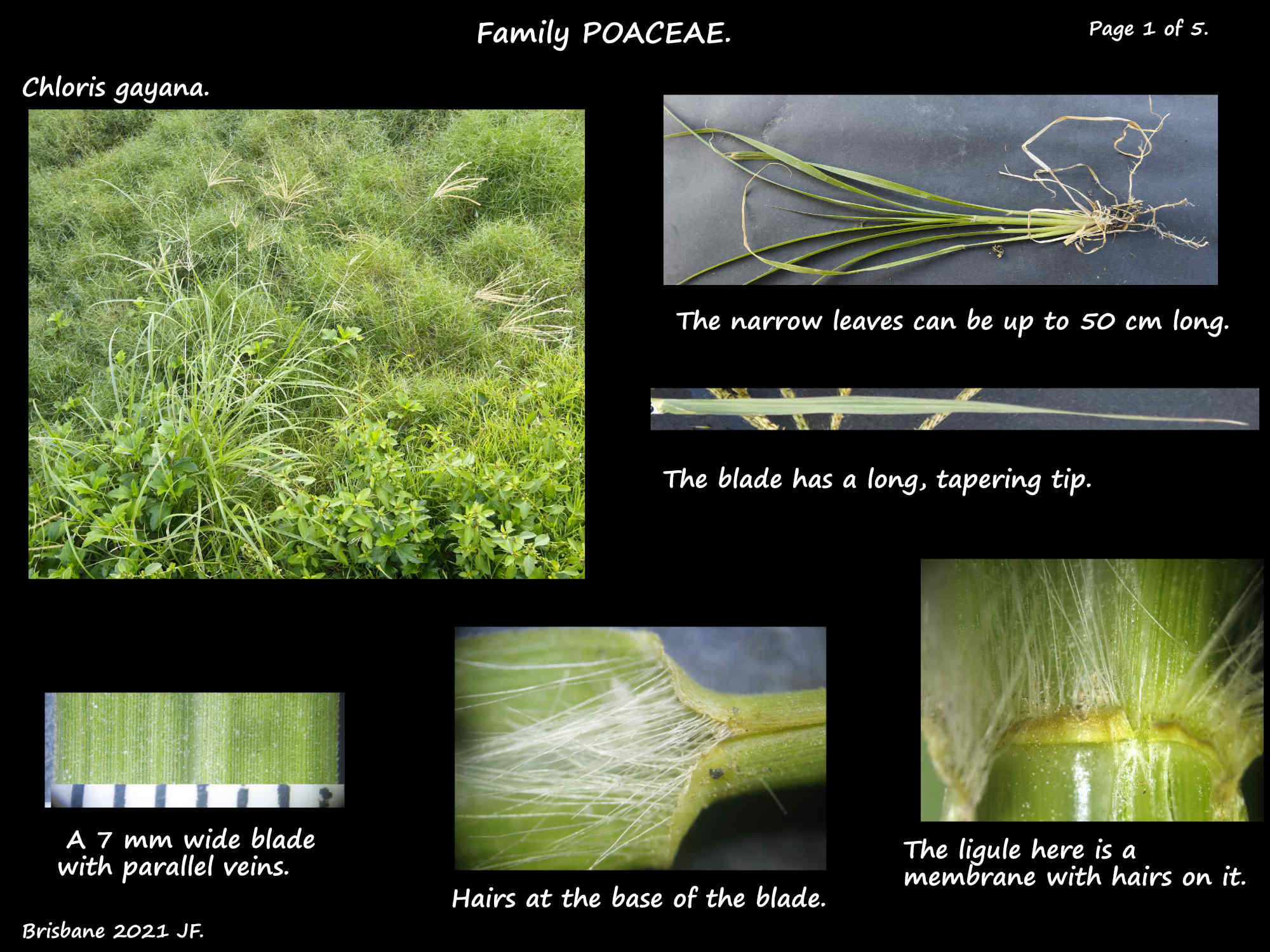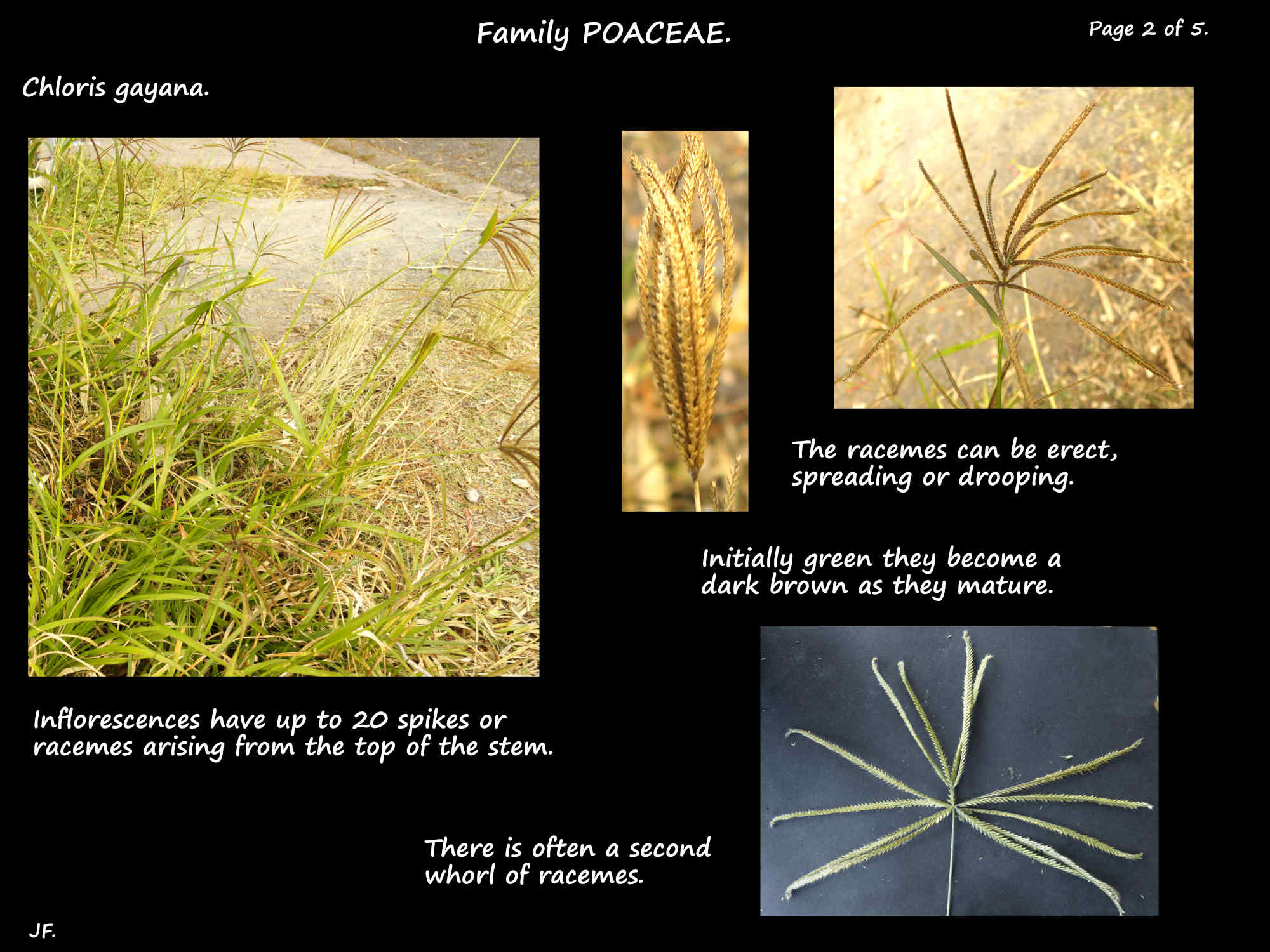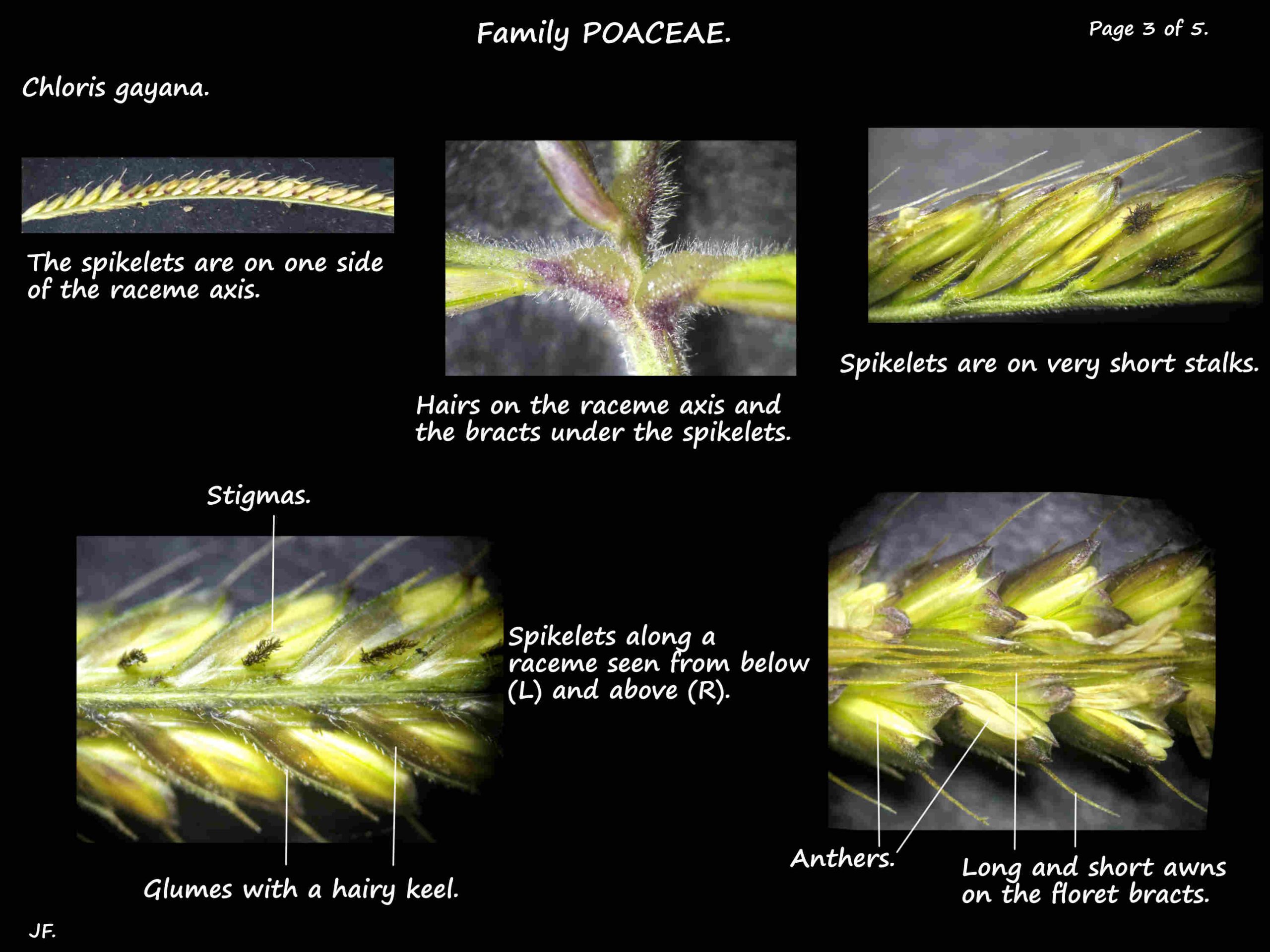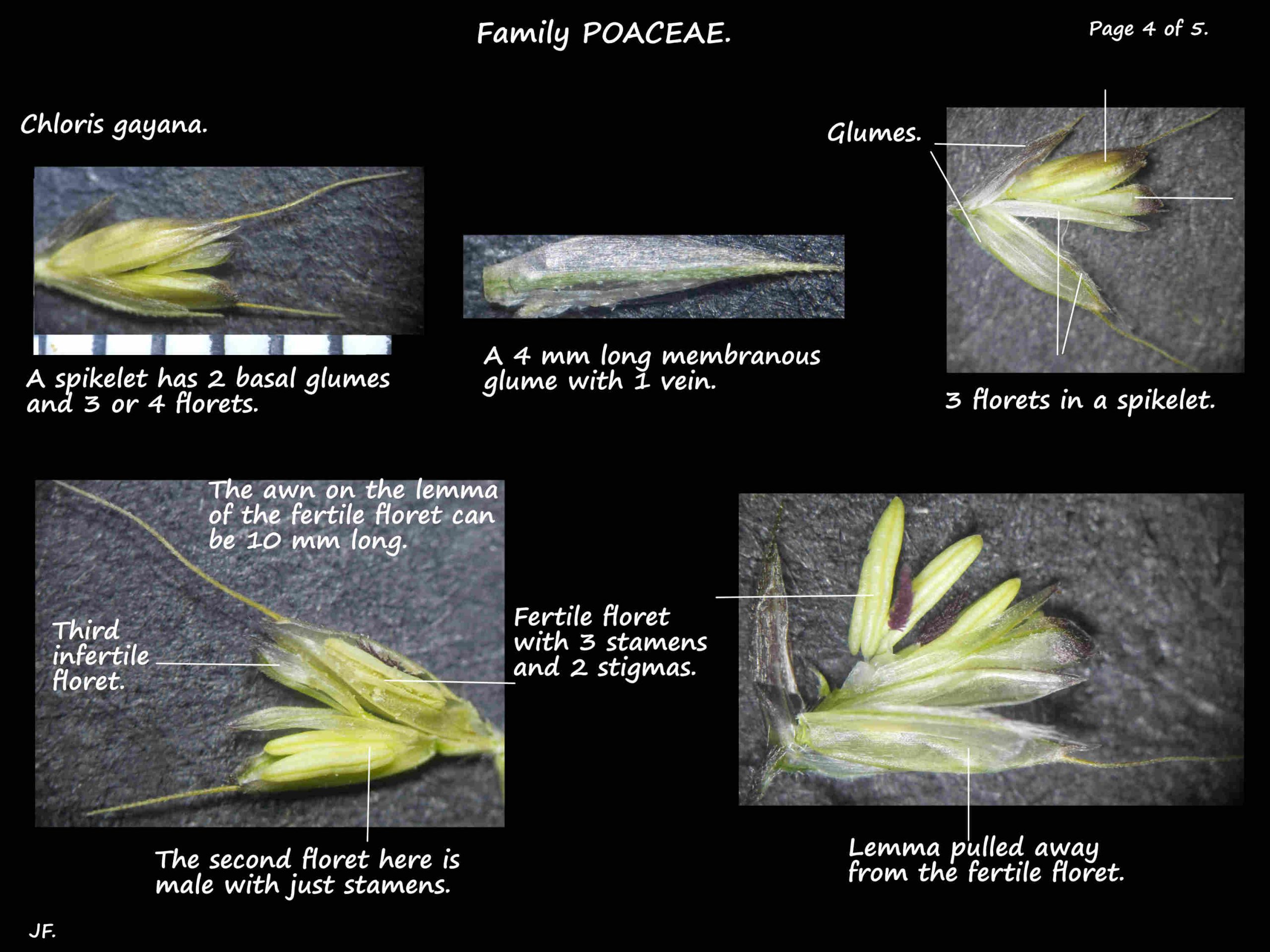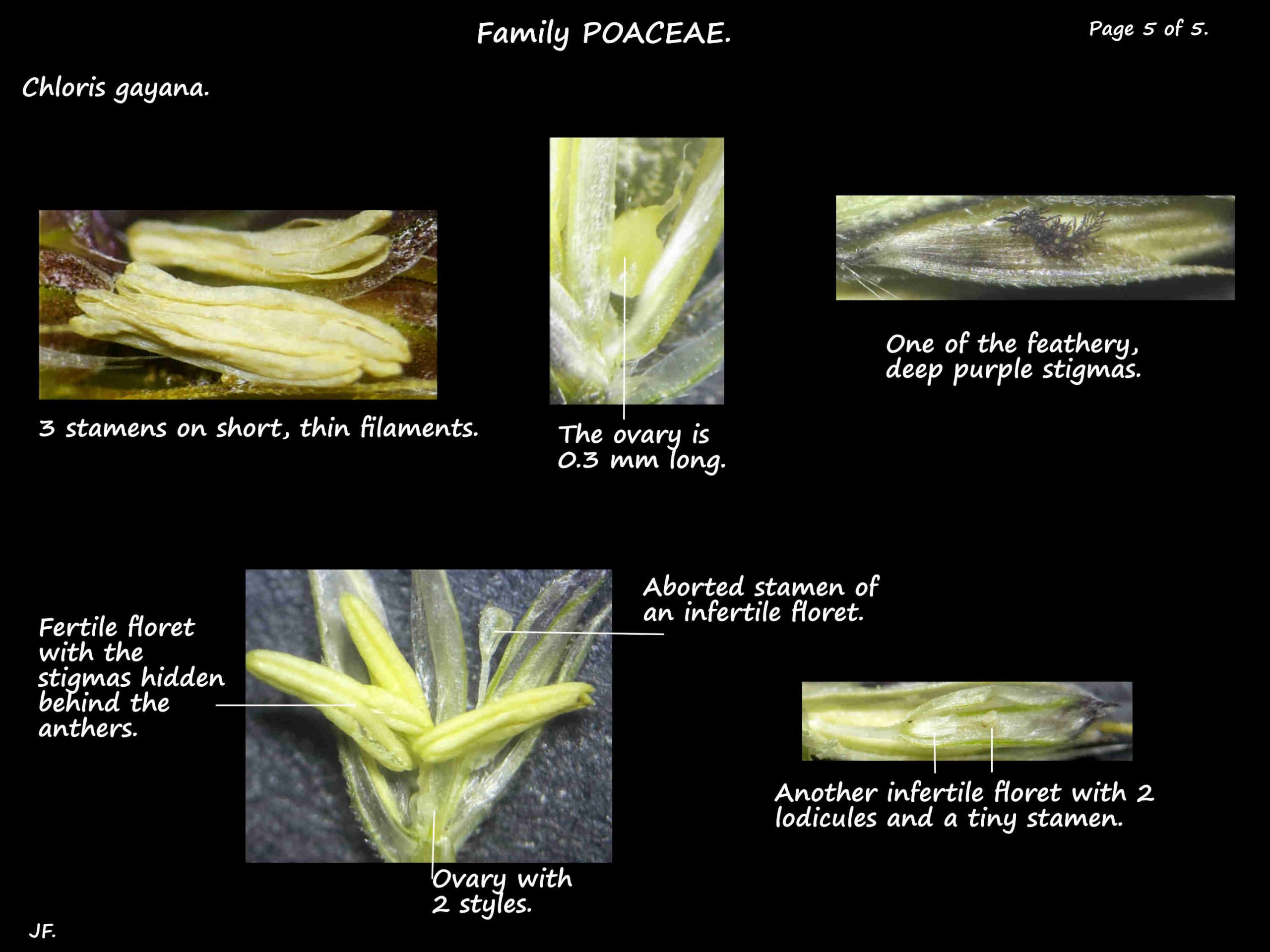Chloris gayana.
Rhodes grass, from Africa, is in Family Poaceae.
It is found in S.E. Queensland where it is an environmental weed as it can grow over low native vegetation.
There are numerous cultivars and features vary depending on the genetic makeup.
A perennial grass that can be clump forming with upright branching stems 1.5 to 2 m high.
A more creeping form has stolons that lie along the ground and root at the nodes.
The linear leaf blades are 10 to 50 cm long and up to 1 (2) cm wide.
They have a long tapering tip and a base that forms an open sheath down the stem.
The base of the blade may have some hairs.
The ligule can be a row of hairs or a 0.5 mm high membrane with hairs along the top.
Umbel-like inflorescences have up to 15 or 20 spikes or racemes radiating from the top of the stem.
Occasionally there is a second whorl of racemes.
The upright or spreading racemes age from green to a dark brown.
The 5 to 10 cm long racemes have 2 rows of spikelets along one side of the central axis or rachilla.
Spikelets, on a very short or no stalk, have 2 basal glumes and 3 or 4 florets.
The glumes, up to 4 mm long, are membranous with the lower being the shorter.
Both have a thickened central keel.
In most cases the lowest floret is fertile with the others being male or sterile.
The fertile floret has a lemma (bract) that is 3 to 4 mm long with an awn up to 10 mm long.
The shorter second bract or palea has an awn from under 1 mm up to 3 mm long.
The infertile florets have a very short or no awn.
Inside the lemma and palea of the fertile flower are 2 small lodicules, 3 stamens and an ovary
with 2 feathery, dark purple stigmas.
The other florets have rudimentary stamens and ovary or are empty.
The single brown seed from each fertile flower is up to 2 mm long.
There are numerous cultivars such as Callide, Pioneer, Finecut, Topcut and Katambora.
The form (a tuft or creeping stoloniferous plant) and the length of the awns help differentiate them.
J.F.
